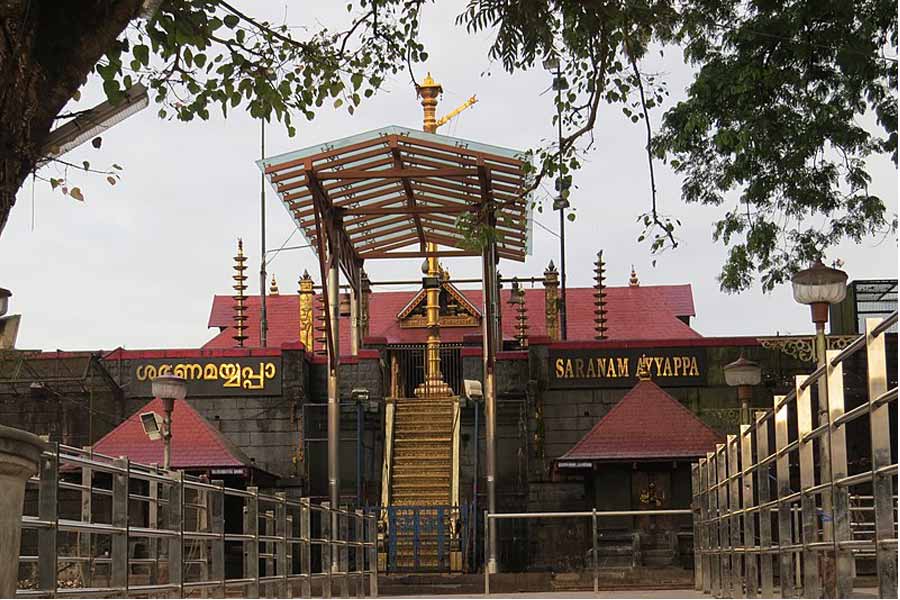A famous—but not so famous—editor of Delhi was known to ring up his erstwhile colleagues (who were not as lucky as him to rise to the top position) every morning his editorial appeared on print. He would specifically ask them whether they had read the last sentence which he claimed was the most important part of the editorial. Because, according to him, he had written it in such a way that nobody would know what to make of it.
The Sabarimala review judgment by the bench headed by Chief Justice Ranjan Gogoi, who has just demitted office, belongs to a similar category. It is virtually a retirement judgment, which pleases possibly everyone and irks none. It leaves the scope for interested parties to interpret the decision whichever way they like, whether they support the entry of women of all ages to the famous hill shrine, or whether they believe that the entry of the women of reproductive age would cause discomfort to the celibate temple deity.
The verdict has expanded the scope of the issue raised in the clutch of review petitions challenging the 2018 September 4-1 majority verdict upholding the right of women of all ages to pray at Sabarimala to include almost everything that is related to religions and religious practices. Accordingly, the Sabarimala issue has been combined with entry of Muslim women in a Dargah/Mosque as well as the restriction on Parsi women married to a non-Parsi to visit the holy fire temple along with the practice of female genital mutilation in the Dawoodi Bohra community. There is nothing wrong with the approach, but it fails to appreciate the fact that the specific issue at Sabarimala is entirely of a different nature.
The court has justified its latest move on the ground that it is time to evolve a judicial policy befitting to its plenary powers to do substantial and complete justice and for an authoritative enunciation of the constitutional principles by a larger bench of not less than seven judges. The decision of a larger bench would put at rest recurring issues touching upon the rights flowing from Articles 25 and 26 of the Constitution of India, the 3-2 majority verdict asserted.
Fellow judge on the bench Justice R F Nariman found the Chief Justice-delivered judgment so funny that he questioned the wisdom of settling the Sabarimala issue on the basis of matters that were not raised before the specific bench. Justice Nariman is so convinced about his dissenting judgment that he asked the Solicitor General, while appearing in another case, whether he had read the judgment and advised him to impress upon the state government to maintain status quo. He does not see anything in the new judgment that affects the operation of the earlier judgment.
This indicates the extent of confusion that the latest Sabarimala verdict has created. It does not say a word about whether the decision of the 2018 verdict stands or is still valid in the wake of the considerations that had gone into the verdict having been admitted for review.
The new situation has put the Kerala government in a fix as it is not sure whether to stop women of the restricted category or allow them to undertake the trek to the temple. The state government has so far taken the position that, unlike last year, when the attempted entry of women had led to an explosive situation with devotees fighting the move with all their might, there is no need to provide protection to women coming forward to visit the temple.
Kadakampally Surendran, the minister responsible for the affairs of temples has advised women desirous of visiting the shrine to come with orders from the Supreme Court for them to be allowed, insisting that Sabarimala is not a place to assert their activism. In fact, as the new pilgrim season gets underway today, the police personnel deployed along the route of the pilgrimage have started checking the details of the women pilgrims to ensure that they don’t belong to the particular age category.
A most interesting question being asked is why the CJI’s bench had to take so much time to decide not to take a decision and leave it to a larger bench. The court had heard the revision petitions in the open court as early as February. And after nine months, it has decided to keep the petitions pending for consideration of a new bench, which will have to be constituted by the new Chief Justice Bobde, who is yet to be sworn in. It is well possible that the new bench may not have any of the members from the benches that considered the case so far.
The Sabarimala verdict is a classic case of the highest court adopting the convenience route whenever issues of sensitive nature are brought before it. The issues get tossed back and forth for as many times as may be required to keep them pending. It is this approach that kept the Ayodhya dispute hanging fire all these years—a closure may have been forced by the fact that it put the very credibility of the highest court of the land in doubt in people’s mind.
(By arrangement with IPA)







